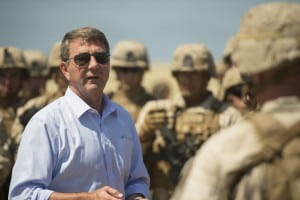
With fewer than 14 days left in the federal fiscal year, Defense Secretary Ash Carter warned that both of the most-likely answers to the current budget impasse would be wasteful and damaging to national security.“Without a negotiated budget solution, we will again return to sequestration, reducing discretionary funds to their lowest real level in a decade--despite the fact that members of both parties agree this result will harm our national security,” Carter said Sept. 16 at the Air Force Association’s…

 By
By 











